In today’s helicopter-parenting world where we go to extreme lengths to keep kids from getting hurt, it might seem a bit crazy to get a real knife for a child. But you could also argue that knowing how to use a knife is a skill every child should know, and having their own knife helps kids learn responsibility.
There’s no hard answer for when a child should get their first knife but, when they are ready, there are plenty of safe knife options for kids. I’ll go over these best pocket, fixed-blade and multi-tool knives for kids as well as some alternatives and guidelines for choosing and how to make sure your kid doesn’t get hurt.
Jump to:
- Quick Picks
- What age is appropriate for kids to get a knife?
- How to choose a first knife for a child?
- Best real knives for kids
- Knife alternatives for kids
- Safety rules
Quick Picks:
Best overall + safest knife: Morakniv Scout 39 Safe – Fixed Blade. It has a rounded tip, finger guard and is a fixed-blade (which is safer than a folding knife). The blade is great quality so holds its edge well. Sharp knives are safer than dull knives, so this is important.
Budget Pick: Opinel My First – Folding Knife. Even though it is cheap, it’s a great-quality knife. It is designed for kids and has a rounded tip and reliable locking system.
Multi-tool: Victorinox Junior 09. A high-quality multi-tool designed for kids. The blade has a rounded tip and locks securely in place. Kids will love the saw tool too.
Wooden knife set: CRKT Nathan’s Wooden Knife Set. It’s a fun project to put together and acts like a real knife – perfect for teaching little kids knife safety.
At What Age Is It Appropriate for a Kid to Get a Real Knife?
It depends on the child, but most children can start using a rounded-tip knife with supervision around the age of five. Around 8 years old, which is the age where Scouts usually start working on their whittling badges, kids may be ready to have their own knife but still may need to be supervised. By the age of 10, responsible children can have their own knife and use it unsupervised.
Your Child Is Probably Ready for their Own Knife If They…
1. Follow Rules
If you can trust your child to follow the rules and generally not do stupid stuff, they are probably ready for a knife. This has nothing to do with age. I know a lot of 8 years olds that I’d trust more than 15 year olds when it comes to following rules!
Lay out the rules (more about this later). If your child doesn’t follow the rules, you take the knife away from them. Simple.
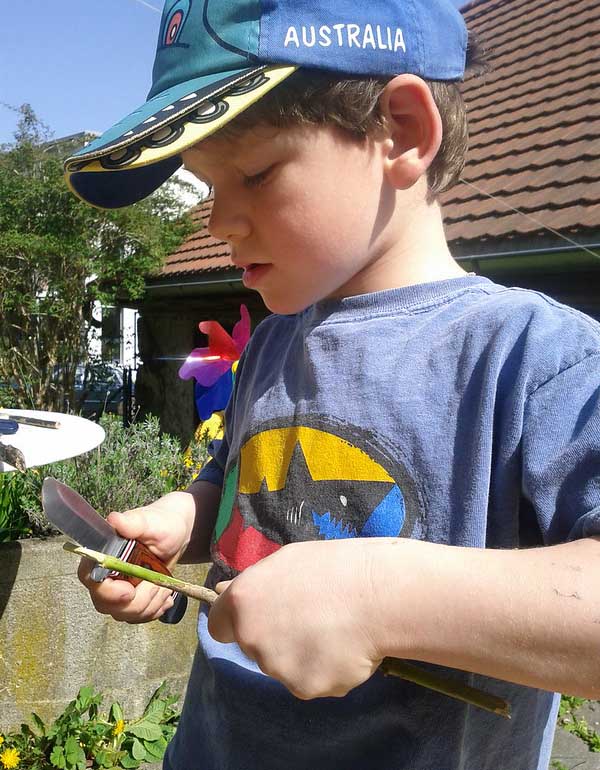
He’s only 5 but can be trusted to use the knife safely. Not all 5 year olds are this calm though!
2. Know First Aid
I’m a firm believer that all kids should learn first aid from an early age, and they shouldn’t be allowed to handle sharp objects like knives unsupervised until they’ve learned how to treat wounds.
On a personal note, my older daughter hasn’t cut herself on a knife yet but she did stab her hand while using a scalpel when she was 9 years old. She called me and I rushed home. There was blood all over the floor and she was sobbing. I was incredibly proud though because, despite her sobbing, she had followed perfect first aid protocol when bandaging her wound.
3. Respect Their Other Belongings
A knife is a serious tool and must be treated with respect. If your child doesn’t put away their toys, leaves things in the middle of the floor or constantly loses their things, they aren’t ready for a knife.
4. Have Good Motor Skills/Can Cut Soft Items
A 4-year old probably isn’t going to be ready for a real knife. They simply don’t have good enough of a grasp to use a knife correctly.
However, that doesn’t mean you need to wait until they are older to teach them knife skills. I gave my daughter a blunt, rounded knife when she was 4 ½ years old and let her “help” me prepare meals. She would use it to cut soft items like bananas or cucumbers. Now, she’s almost 6 and is very good at using a kitchen knife. She still isn’t ready for a pocket knife (and still hasn’t asked for one), but will likely be ready by the time she’s 8 or 9.
By the way, Opinel makes an awesome kitchen knife for kids with a finger guard. It’s great for teaching knife skills.
Choosing a First Real Knife for a Child
Here are some of the key features to look at when choosing a first knife for a child.
Rounded Point Knives for Safety
Most knives designed to be a child’s first knife have a rounded point, so you don’t have to worry about accidental stabbing. I’m a big advocate of these safety knives because the knife tip doesn’t really get used often anyway. Your child will still be able to whittle, peel bark off walking sticks, and make kindling with a rounded knife.
The tip of the knife is its weakest point, so is prone to breaking when misused (and your kids will misuse it!). So, a rounded-point knife will last longer. I also feel like kids are less likely to do something stupid like throw their knife at a tree when the point is rounded.
On the downside, your child won’t be able to carve holes or do detailed carving with a rounded point. If this is the main way they will use the knife, a pointy tip is the way to go or consider getting them specialty woodworking tools instead.
Fixed Blade vs. Folding for a Child
Fixed-blade knives are almost always the better choice when it comes to first knives for kids (or adults, for that matter). They are inherently safer because kids tend to cut themselves when folding knives. They just can’t seem to remember to keep their fingers out of the way. Fixed blades are also stronger and easier to maintain.
If you are going to go with a folding knife for your child, then choose a lock-back knife with two-handed opening. These have a locking mechanism which keeps them locked when open or closed. To close the knife, you press a button on the back.
Absolutely Avoid:
- Slip-joint folding knives. These don’t lock in place so can easily fold over onto your child’s fingers or hand.
- Cheap folders. The locking mechanisms on these are unreliable. If you are on a budget, get a fixed-blade instead.
The Knife Must Be VERY Sharp
A dull knife is a dangerous knife. This is because you have to apply a lot of pressure on a dull knife, making it more likely to slip. If the knife does slip, the extra force means it can cause a lot of damage. A dull cutting edge will also make wide cut whereas a sharp knife makes a thin cut which heals quickly.
So, it is very important that your child’s knife be kept very sharp. If you get them a very cheap knife which doesn’t hold its edge well, then it may need to be sharpened after each use. Consider getting your kid a little sharpening stone so they can do this themselves.
If you are scared to give your kid a sharp knife, whatever you do, don’t give them a semi-sharp knife. Instead, give them a very dull knife (like a wooden knife) and let them use this until they learn proper knife technique.
Best Real Knives for Kids
Fixed Blades
Fixed blade knifes are safer than folding knives and much sturdier, so better for doing things like whittling or making tinder. They are also cheaper to make than folders, so you can get a better knife for the same budget.
| Image | Product | Features | Price |
|---|---|---|---|
Best Overall 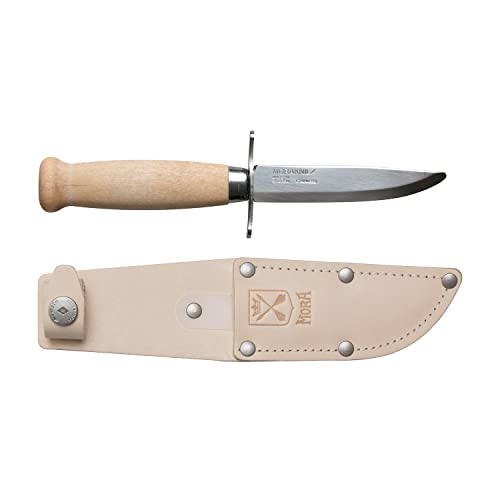 |
| Check Price | |
Runner Up 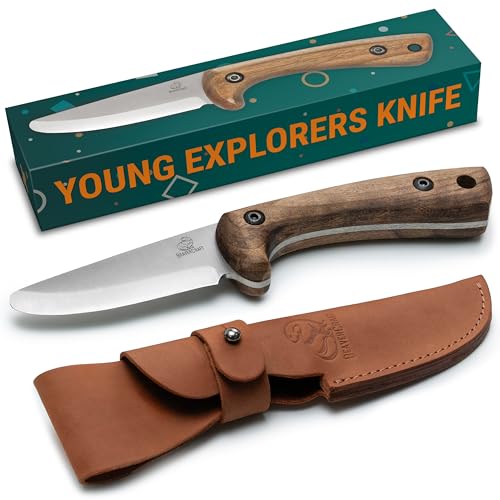 |
| Check Price | |
Budget Pick 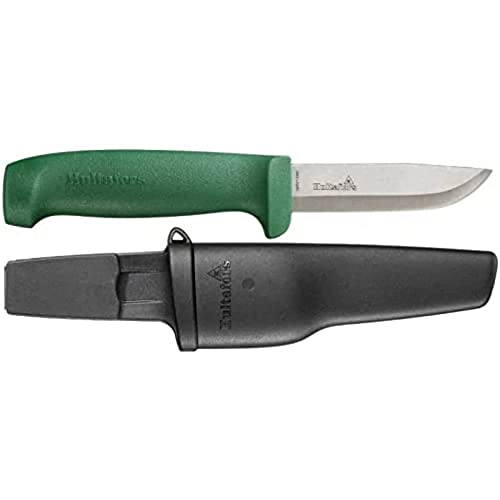 |
| Check Price |
Folding Knives
While fixed blades are better, folding knives are smaller so easier to carry. The following folding knives are good for kids because they have reliable lockback locking systems, so won’t accidentally close on your child’s fingers.
| Image | Product | Features | Price |
|---|---|---|---|
Best Overall 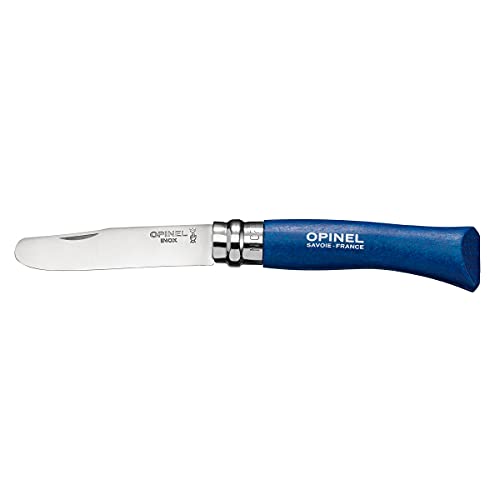 |
| Check Price | |
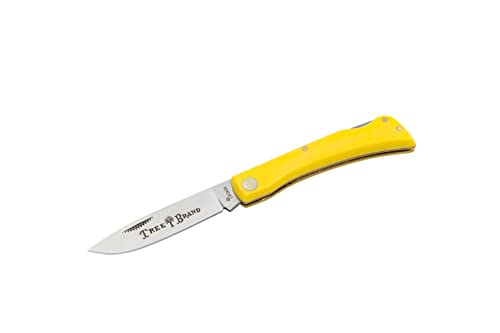 |
| Check Price | |
 |
| Check Price |
Multi-tools
The knife on a multi-tool is never going to be as good as a fixed blade or a good folder. However, if your child is the industrious type and more likely to use the tools than the knife, a multi-tool might be better than a knife. I had one when I was 10 and loved using the screw driver to take things apart. Consider getting some old telephones and appliances at junk sales or you might find your belongings in pieces 🙂
I’ve included a bladeless multi-tool here. Leatherman also makes the bladeless Rebar but it’s fairly expensive to be a child’s first knife, so it isn’t one of my top picks.
| Image | Product | Features | Price |
|---|---|---|---|
Best Overall 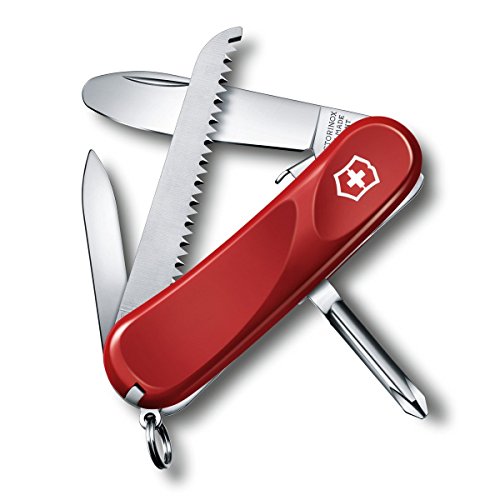 |
| Check Price | |
Budget Pick 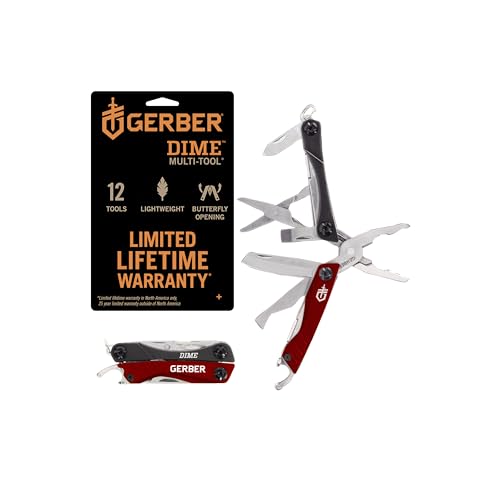 |
| Check Price | |
Bladeless Pick 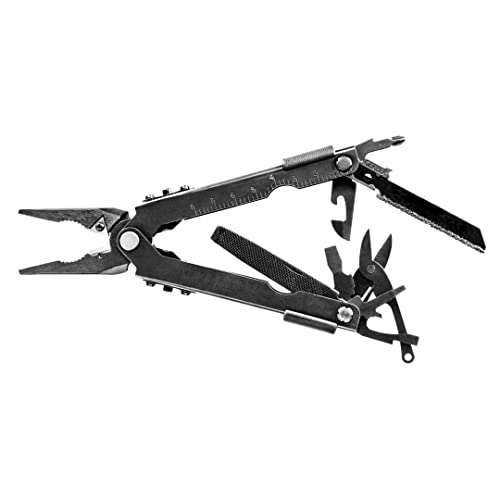 |
| Check Price |
Knife Alternatives for Kids
Your child wants a knife but you don’t think they are ready yet? Several brands make wooden knife sets which you assemble yourself. These are great for little kids. Tell them that if they use the wooden knife responsibly that they will be able to get a real one.
I like Nathan’s Knife Kit by CRKT because it folds and opens like a real knife. Spyderco also makes a nice wooden knife set which comes in a cool metal tin.
You might also consider getting your child a folding saw like this one instead. A folding saw has the same allure and feel as carrying a pocket knife and kids can use them to saw branches, but they are much less likely to hurt themselves with one.
Rules for Kids and Pocket Knives
There Must Be First Aid Supplies Available
Don’t let your child use the knife anywhere that doesn’t have first aid supplies around. It might sound extreme but it’s essential in teaching them to be responsible.
On that note, you always pack a first aid kit with you when camping, hiking or hunting, right? If not, it’s time to lead by example.
This doesn’t mean your child needs to lug around a full first aid kit whenever they go exploring in nature. However, they should have their own mini kit which at least includes some band-aids. I always keep a few in my wallet.
As mentioned before, knowing first aid is a prerequisite for being able to use a knife (especially unsupervised), so they should know how to do things like use their shirt to apply pressure to a large wound.
Also read: Lightweight Outdoors First Aid Kit Checklist
Only Supervised Use at First!
I’ve heard countless stories that go like this:
- Child gets a pocket knife for 10th birthday.
- Goes up into their room with it.
- Comes down 5 minutes later with a large cut on their hand.
Seriously, even if you think your child is responsible, don’t let them use it on their own. Their first few times using it should be supervised so you can make sure they are using good techniques.
Give Them Soft Materials for Practicing
In Scouts, kids first practice whittling on bars of soap. This lets them get a feel for the knife and learn proper technique. After your kid masters a bar of soap, move them to soft woods like basswood.
Here are Scout instructions for how to do a soap carving and there are some free templates here.
Warning: Avoid bars of soap with moisturizer in them. They are really slippery! Instead, choose hard bars of soap like Ivory.
Establish Safety Rules
You’ll need to teach your child the basics of knife safety. The Scouts have a good PDF guide on the topic. But you’ll also need to establish your own safety rules for the knife, such as:
- How they can use it. Whittling may be allowed, for example, but throwing it at trees is off limits.
- Where they are allowed to take the knife. Is it only for special occasions or can they bring it wherever they want (obviously not to school)?
- Whether they can show it to friends. Just because your child is responsible, it doesn’t mean their friends are. Do you want to deal with angry parents if another kid gets hurt with your child’s knife? If your child will take it places with friends, consider talking to their parents first and discussing knife safety with those children.
- Who else can use it. Maybe the rule is that they can show it to friends but not let anyone else use it. Or maybe specific friends are allowed to use it.
Yes, Kids Will Get Hurt with their Pocket Knives
One last note: children will probably get hurt at some point with their knife. But getting hurt is how we learn things in life. So, don’t be scared of giving your child a knife as these lessons can teach them discipline and responsibility. 🙂
Image credits:
“Whittling” (CC BY 2.0) by wittco.gmbh,
“February 28 – Whittling” (CC BY-NC-SA 2.0) by Scott Hamlin,
“The Nature of 100” (CC BY-NC 2.0) by USFWS Pacific,
“First Knife” (CC BY-NC 2.0) by belpo,
“Sharpening The Knife” (CC BY-SA 2.0) by pate,


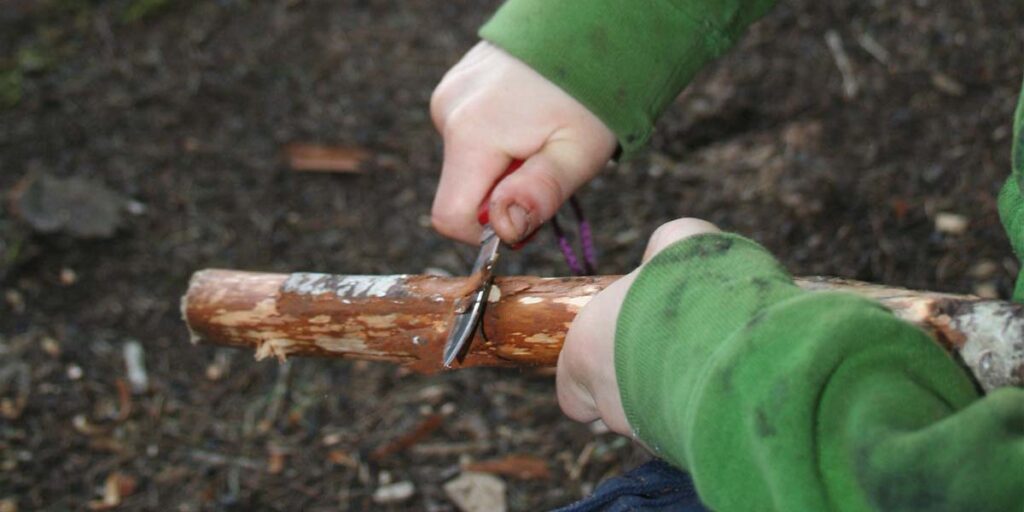
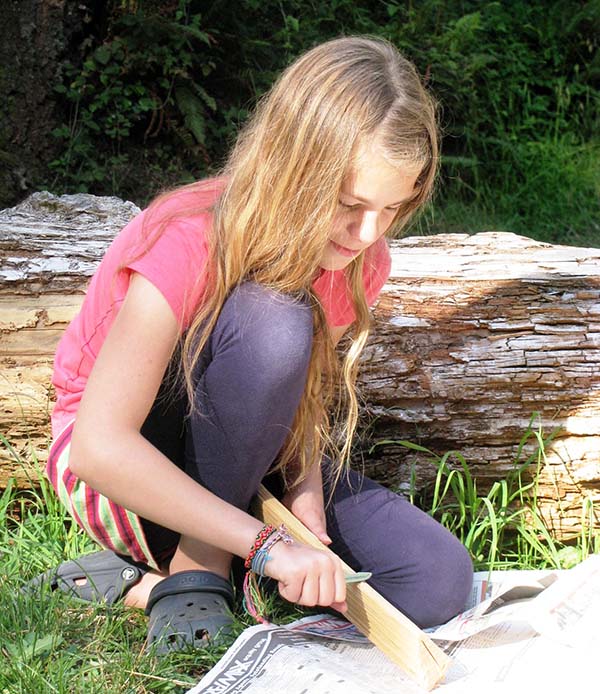
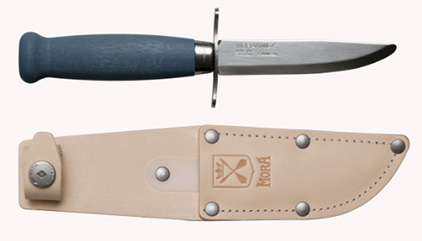
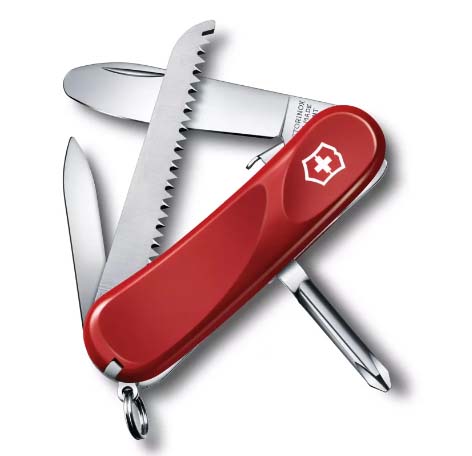
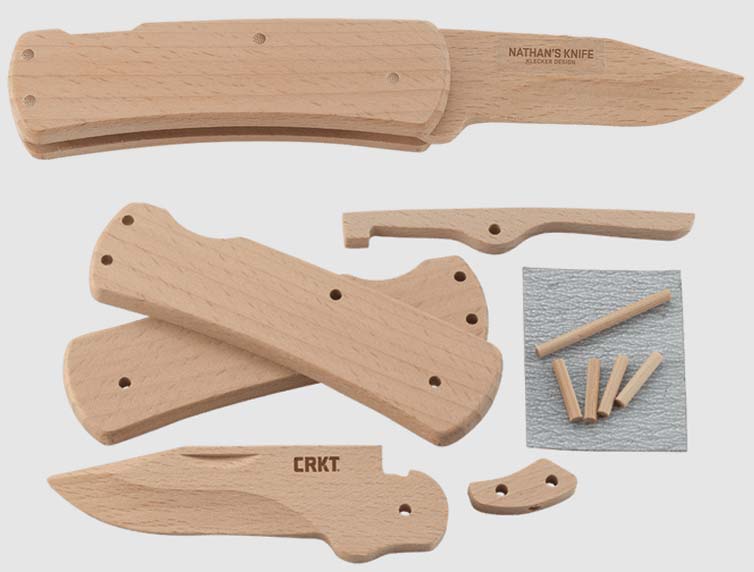
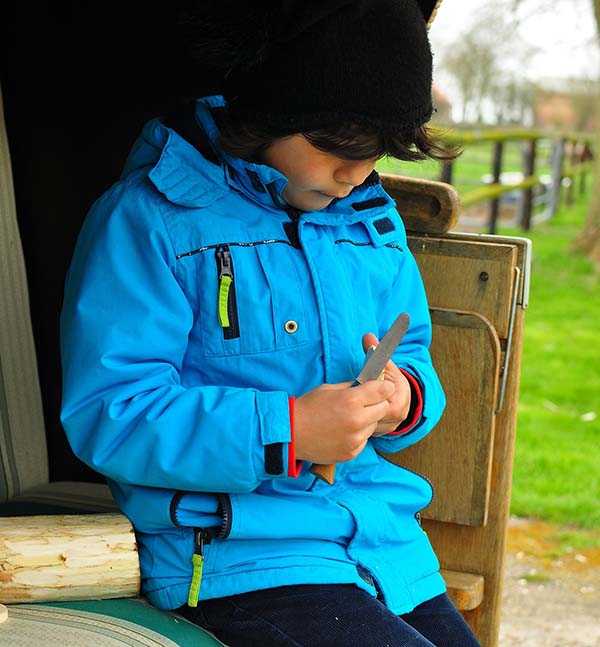
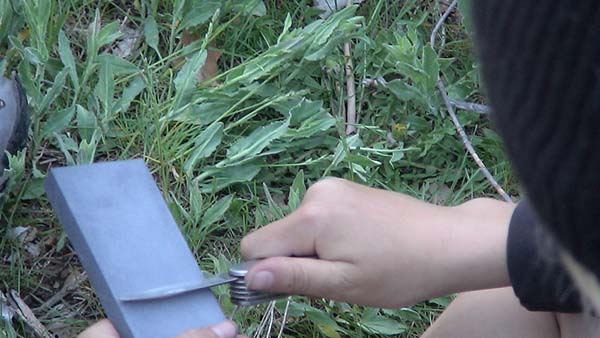
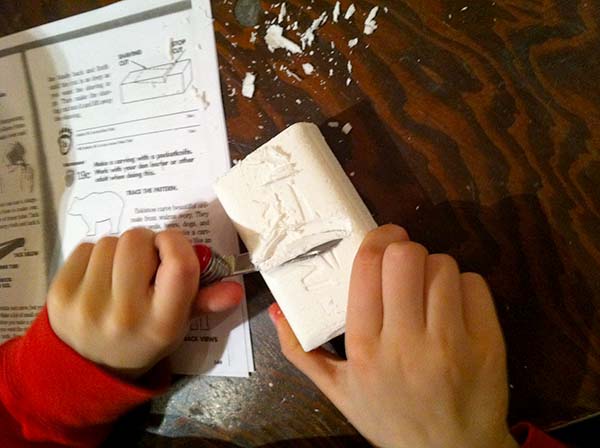
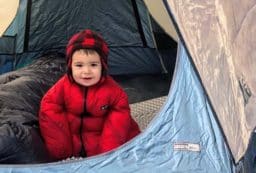
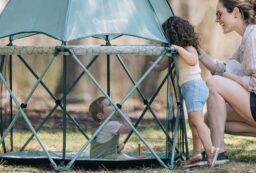
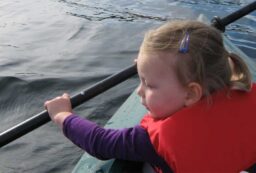







Post your comments